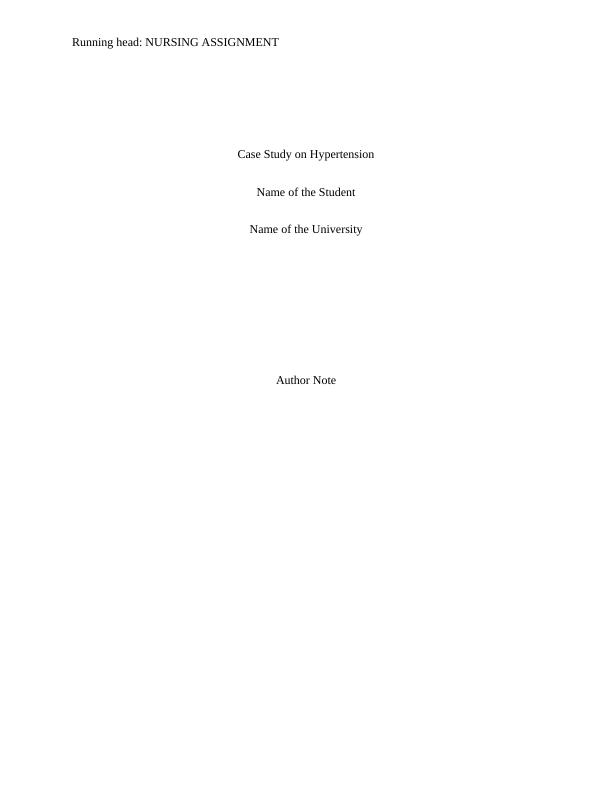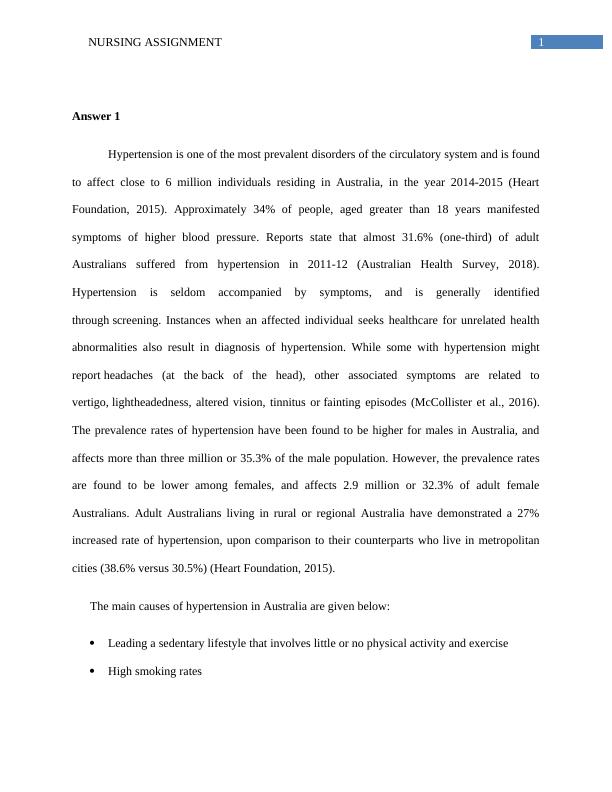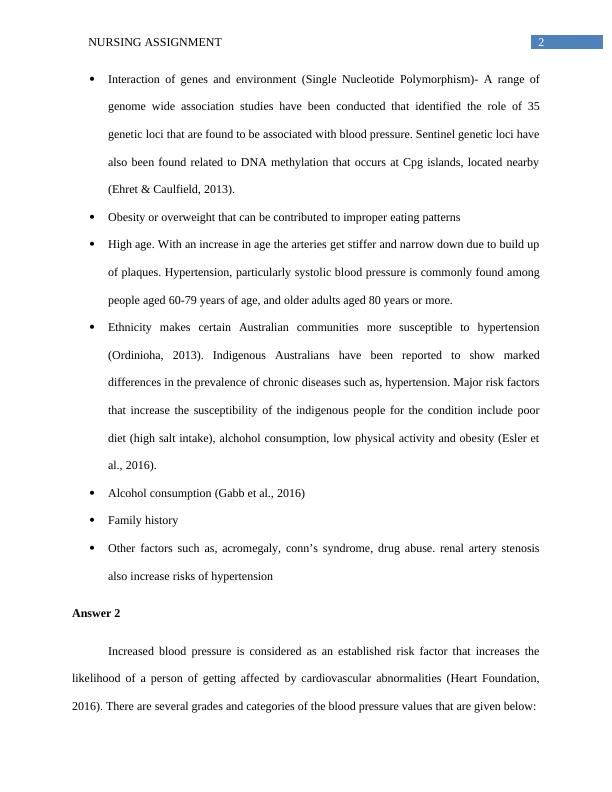Case Study on Hypertension
Added on 2021-06-16
9 Pages1946 Words28 Views
End of preview
Want to access all the pages? Upload your documents or become a member.
Effects of Age and Gender in the Development of Hypertension, Tachycardia and Congestive Heart Failure
|1
|1871
|336
Healthy Lifestyle for Healthy Heart Beat: Understanding Hypertension
|1
|886
|254
Case Study and Education on Hypertension and Rheumatic Fever
|8
|1477
|49
Hypertensive Patients PDF
|13
|3931
|88
Effectiveness of Daily Exercise Regimen on Blood Pressure in Hypertensive Patients
|5
|1219
|315
Systolic Heart Failure Answer 2022
|10
|2149
|36


